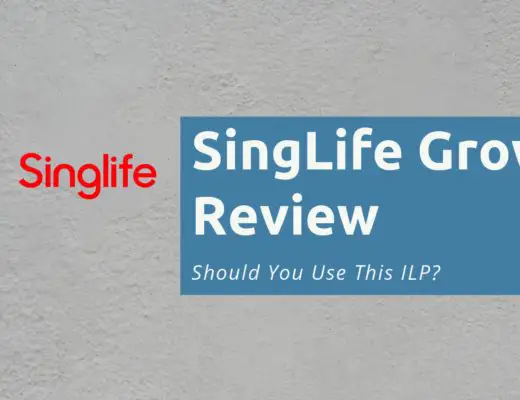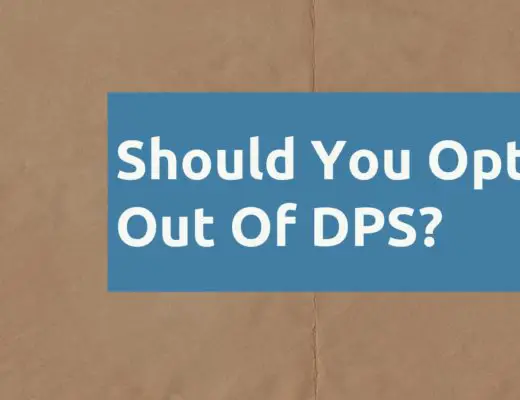Last updated on June 6th, 2021
Insurance is something that most of us are familiar with. However when it comes to making claims from these policies, you may still be unsure of certain things!
Here is an explanation of how you can make multiple claims for the same event:
Contents
Can I claim from 2 insurance companies in Singapore?
It is possible to make multiple claims from insurance policies that give you a sum assured when certain conditions are met. However, policies that offer you reimbursement cannot be claimed multiple times. These policies like hospitalisation insurance are only meant to return you back to your original state before the incident.
2 types of insurance payouts
For most insurance policies, there are 2 main types of payouts that you will receive:
#1 Sum assured (Non-indemnity)
For these types of policies, you will receive a payout when certain conditions are met.
Some examples of a ‘sum assured‘ policy include:
- Life insurance (including total and permanent disability)
- Critical illness insurance
- Disability insurance
This means that you will receive a payout when certain conditions occur.
| Type of Policy | Payout Condition |
|---|---|
| Life | Death |
| Critical illness | When you meet the criteria for one of the 37 critical illnesses |
| Disability | When you are either totally or permanently disabled |
Another example is a hospital income payout
Another type of payout that you can receive in the form of a ‘sum assured’ is a hospital income payout.
This benefit that you receive can be found in different insurance policies, such as:
- Your personal hospitalisation insurance plan
- Your company’s hospitalisation insurance plan
- Your personal accident plan
However, you will first need to fulfil certain criteria to be eligible for the payout!
Some examples include being warded for a specific number of days. Once you fulfil this criteria, you will receive the payout from the insurance company.
Since this payout can be found in different insurance policies, you can make double claims!
#2 Reimbursement (Indemnity)
For these types of insurance policies, they are meant to bring you back to your original state. This means that you’ll need to make a purchase first before you can make a claim.
For example, you may incur certain hospital bills during your hospital stay. You will need to pay for the bill first.
Afterwards, you will be able to claim these expenses from the insurance company.
As such, you will only be reimbursed your total loss. You are unable to make any double claims.
Moreover, it is not the intention for you to profit from the insurance policy. You are only meant to be reimbursed for any expenses that you’ve incurred!
Which type of policies am I able to make multiple claims from?
You may still be confused about the type of insurance payout you’ll receive from each policy. Here’s an in-depth explanation for the common types of insurance policies in Singapore:
#1 Life insurance
For these types of policies, there will be a condition and a sum assured.
If you have different life insurance plans with death benefits, you will be able to claim from.
With the rise of insurance savings plans, you might have multiple plans that provide you with death payouts. These include plans like:
For GIGANTIQ, you will receive 105% of your Account Value when you pass on at any age before 100 years old.
As such, you can receive multiple payouts from all of these plans, provided that their conditions are met.
#2 Hospitalisation
Everyone in Singapore will have a hospitalisation insurance plan. There are 2 types that are available in Singapore:
- MediShield Life (compulsory for all Singaporeans)
- MediShield Life with Integrated Shield Plan
It is not possible for you to purchase 2 separate hospitalisation plans for yourself. As such, you cannot claim from multiple insurance companies.
Even if you wanted to make a claim, hospital plans are reimbursement type of policies. They are only meant to bring you back to your original state, before you paid for your medical expenses!
However, your hospital bill may be too large. It is possible to use up all the coverage from one plan, and then claim the remainder from another policy.
This is where your corporate hospital plan comes in to play.
You can have a corporate hospital insurance plan too
The company that you worked for may have purchased a corporate insurance plan for you. Your employer will purchase a group insurance which provides coverage for you and your fellow employees.
As such, it is possible to actually have 2 hospitalisation insurance plans! If you are hospitalised, the best way go about making a claim is to:
- Claim from your corporate insurance plan first
- Claim any remainder from your personal plan
This is really useful especially if your personal plan can’t cover the entire hospital bill!
As such, you are unable to make a double claim.
Hospitalisation payouts are the only benefits you can claim from multiple plans
The hospitalisation payouts are similar to how life and critical illness plans work. So long as you fulfil the criteria for the payout, you will receive a lump sum.
As such, it is possible to claim multiple hospitalisation benefits from your different plans.
#3 General insurance
Other general insurance plans are similar to how hospitalisation plans work. They are reimbursement types of insurance policies.
This means that you will only be reimbursed the amount that you’ve lost.
Some examples of general insurance plans include:
- Home insurance
- Car insurance
- Travel insurance
- Maid insurance
- Personal accident insurance
All of these plans are meant to return you to your original state. As such, it is not possible for you to make multiple claims, even if you have multiple policies!
#4 Life, Critical Illness and TPD plans
These are non-indemnity plans that give you a payout when certain conditions are met. Here are some of the possible conditions for these different plans:
| Plan | Condition |
|---|---|
| Life | When you pass away |
| Critical illness | When you are diagnosed with one of the 37 critical illnesses defined by LIA |
| TPD | When you are totally and permanently disabled, as certified by a medical professional |
For example, you may have multiple death benefits across different plans. Once you pass away, this condition will be triggered.
As such, you can receive multiple death benefits from all of your plans!
The only problem is that it’ll be rather troublesome to file multiple claims to every insurance companies.
What happens if I want to have more coverage?
When you are looking to be reimbursed for certain events, you may realise that your coverage may be too little!
As such, one way you can increase your coverage is by increasing your premiums.
Another way you can consider receiving more coverage is by buying multiple policies. However, here are some things you’ll need to consider:
#1 You should not get 2 reimbursement plans
Reimbursement plans will only help you to return to your original state. As such, having multiple plans does not mean that you can make multiple claims.
In fact, you will be paying too much premiums without benefitting much from it!
If you want to receive greater coverage for these plans, the only way will be to increase your premiums.
#2 You can consider getting multiple non-indemnity plans
For non-indemnity plans, they will give you a payout once a condition is met. As such, it is possible to buy multiple non-indemnity plans.
However, it may be more cost effective to have just one policy with a higher coverage. This comes with 2 advantages:
- Your premiums may be cheaper compared to having 2 separate policies with different companies
- You do not need to face the hassle of dealing with 2 different companies for the claims
If you are unable to afford the higher premiums, you may want to consider SNACK by Income which allows you to buy policies from just $0.30.
#3 It may be better to purchase policies that provide coverage for different circumstances
If you are considering purchasing multiple policies, you should buy ones that complement each other. It would be best not to buy plans that are overlapping.
This means that you should buy plans that provide coverage for different circumstances.
For example, here are 3 different personal accident plans:
| Plan | Coverage |
|---|---|
| Plan A | Covers GP expenses |
| Plan B | Covers TCM expenses |
| Plan C | Covers GP expenses |
If you purchase both Plan A and C, you are overlapping your coverage. It may make more sense to just buy one plan and purchase a higher premium.
However, purchasing both Plan A and B complements your coverage. You are now protected against different scenarios!
Conclusion
The type of policy determines whether you are able to make multiple claims or not. Most of the time, it will be better to just have one plan and purchase higher premiums.
However for reimbursement type of policies, it is not advisable at all to purchase multiple plans. This is because these plans are only meant to return you to your original state!

Do you like the content on this blog?
To receive the latest updates from my blog and personal finance in general, you can follow me on my Telegram channels (Personal Finance or Crypto) and Facebook.
Are you passionate about personal finance and want to earn some flexible income?




